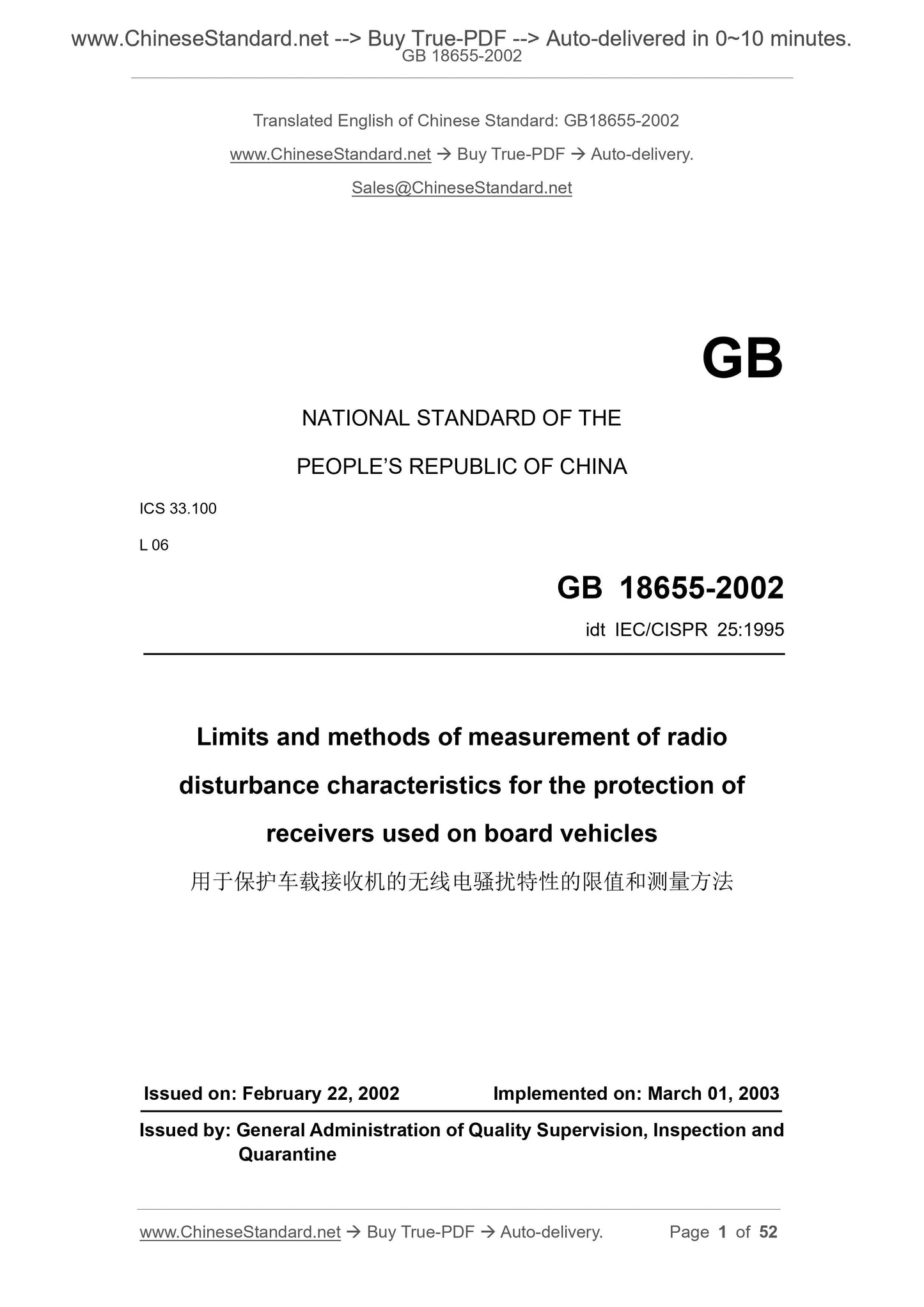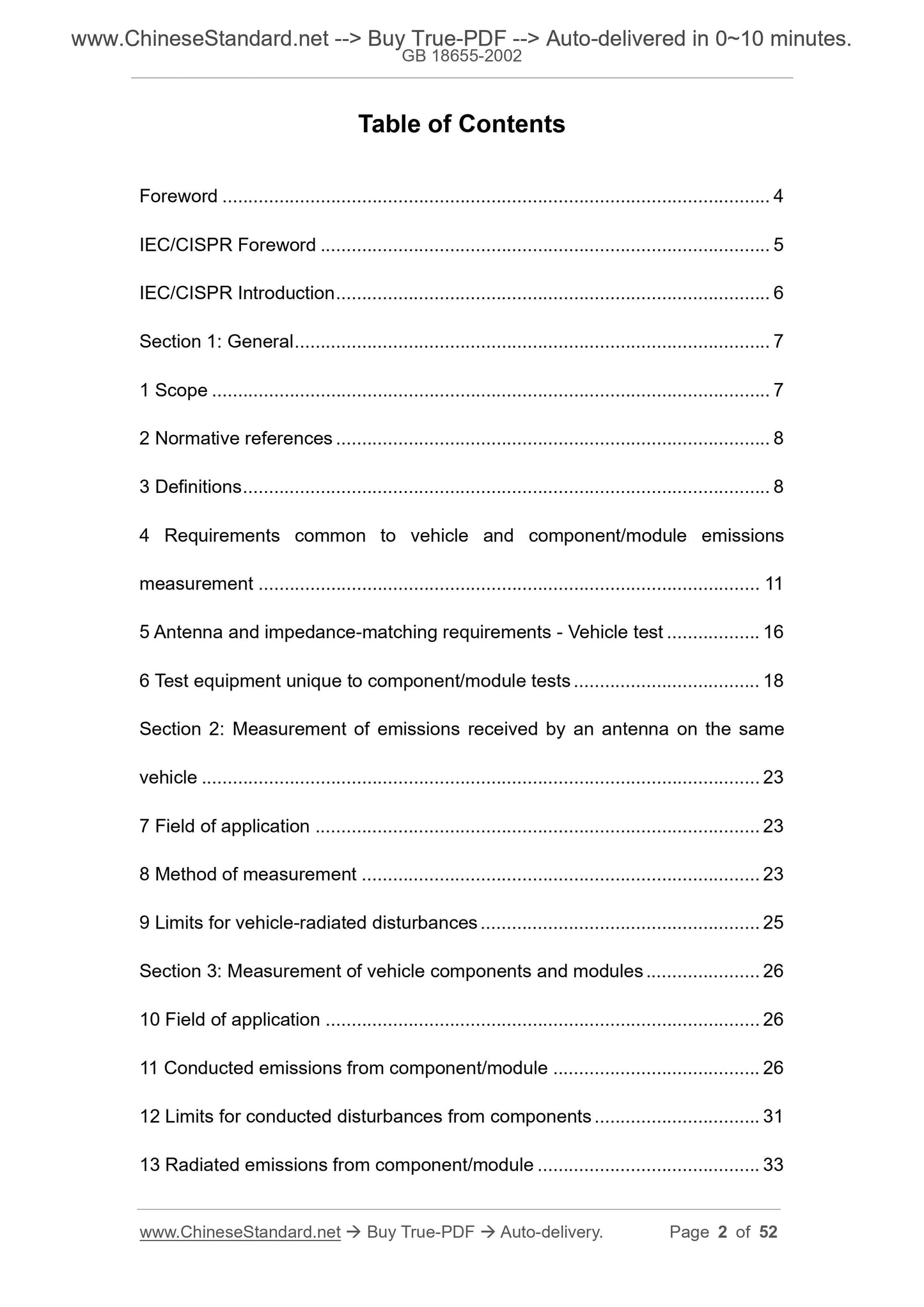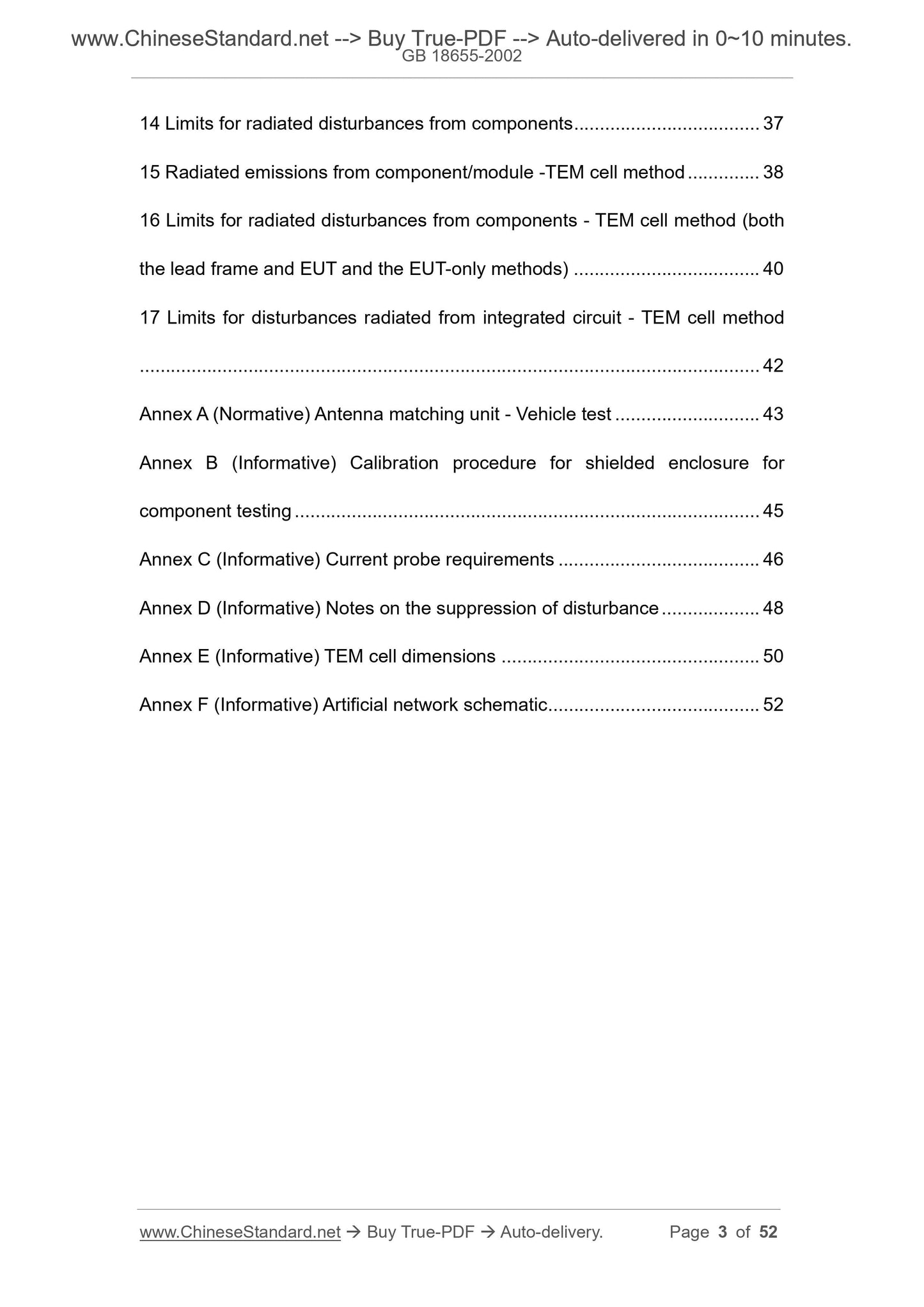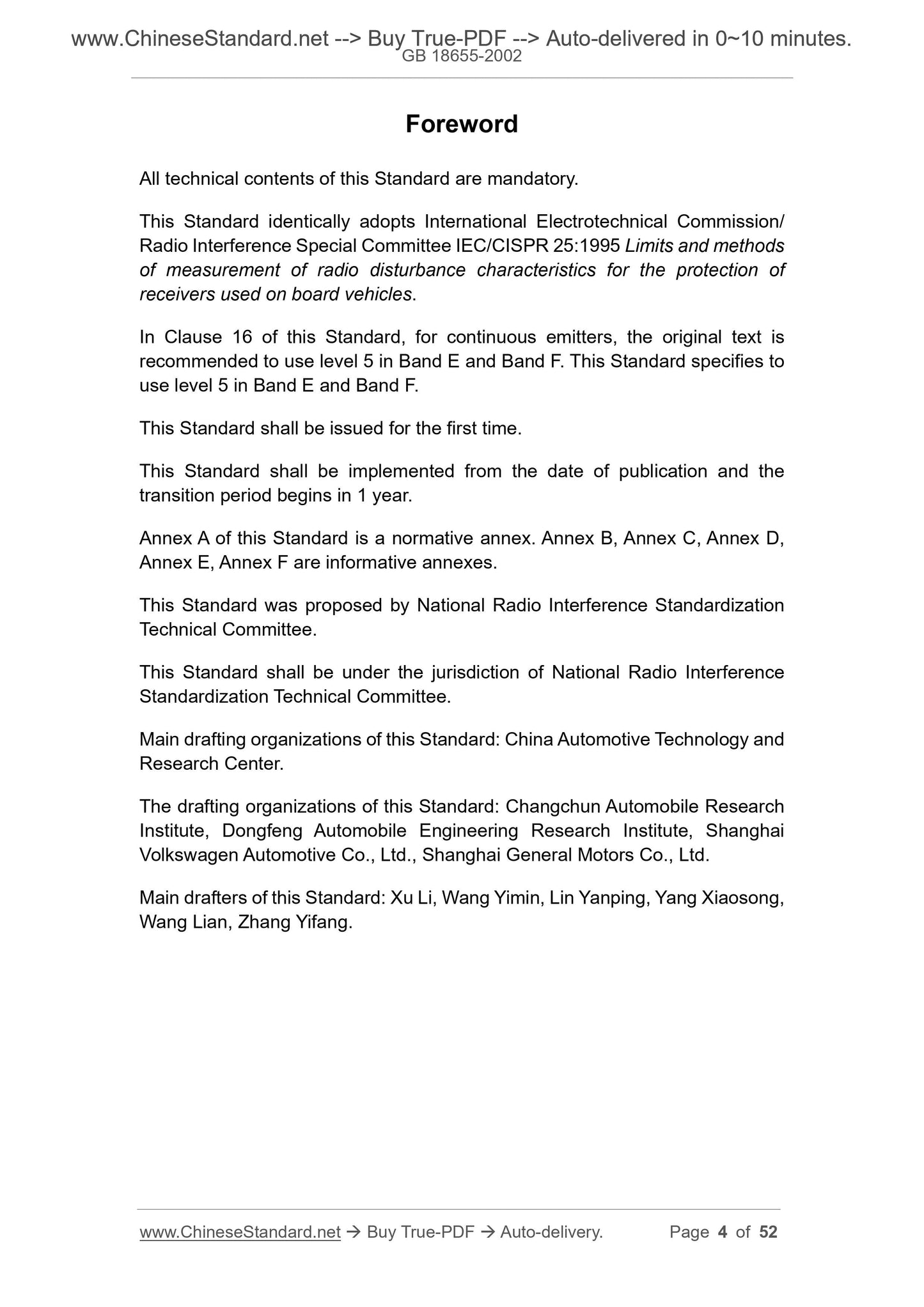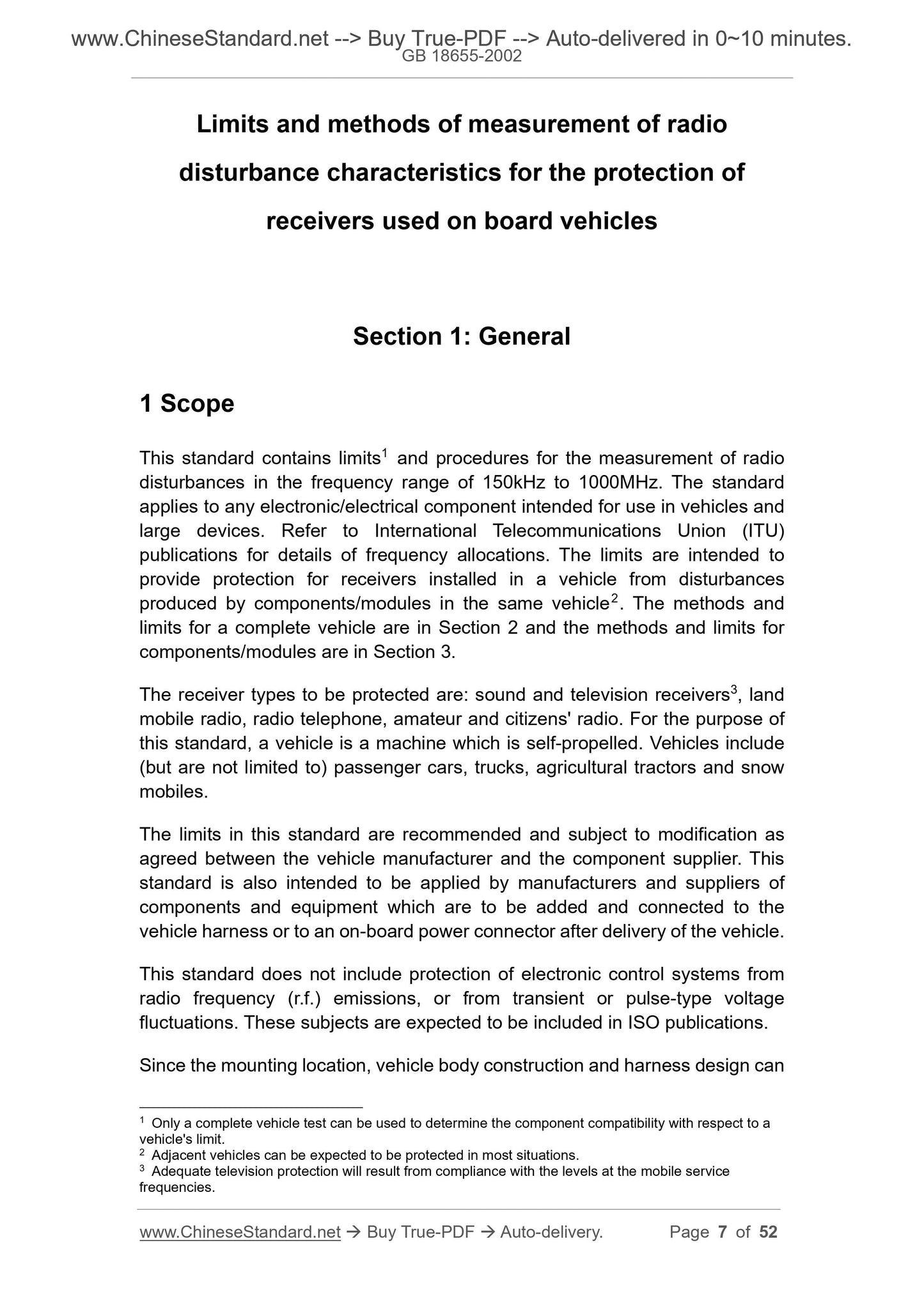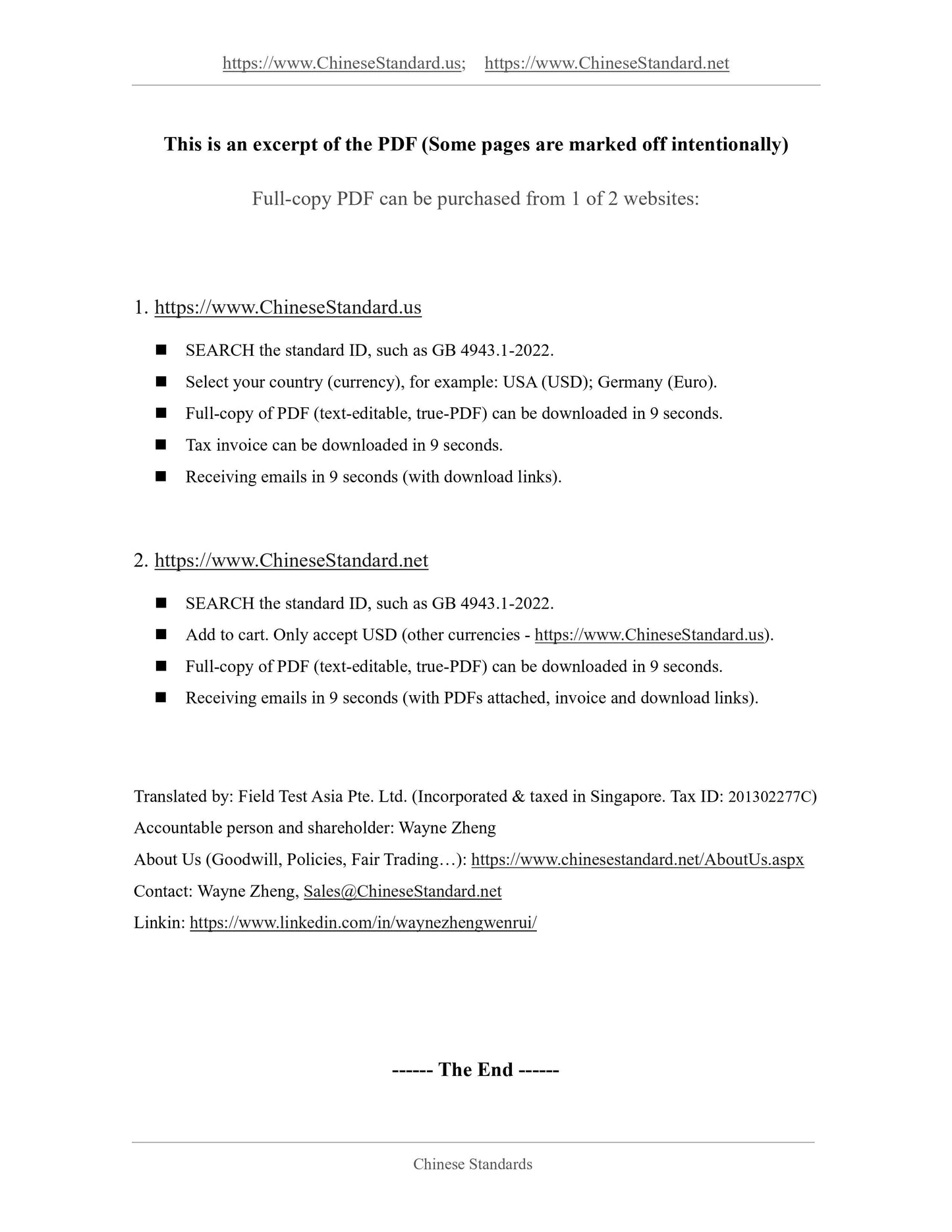1
/
of
6
PayPal, credit cards. Download editable-PDF and invoice in 1 second!
GB 18655-2002 English PDF
GB 18655-2002 English PDF
Regular price
$270.00
Regular price
Sale price
$270.00
Unit price
/
per
Shipping calculated at checkout.
Couldn't load pickup availability
GB 18655-2002: Limits and methods of measurement of radio disturbance characteristics for the protection of receivers used on board vehicles
Delivery: 9 seconds. Download (and Email) true-PDF + Invoice.Get Quotation: Click GB 18655-2002 (Self-service in 1-minute)
Newer / historical versions: GB 18655-2002
Preview True-PDF
Scope
This standard contains limits1 and procedures for the measurement of radiodisturbances in the frequency range of 150kHz to 1000MHz.The standard
applies to any electronic/electrical component intended for use in vehicles and
large devices.Refer to International Telecommunications Union (ITU)
publications for details of frequency allocations.The limits are intended to
provide protection for receivers installed in a vehicle from disturbances
produced by components/modules in the same vehicle2 .The methods and
limits for a complete vehicle are in Section 2 and the methods and limits for
components/modules are in Section 3.
The receiver types to be protected are: sound and television receivers3, land
mobile radio, radio telephone, amateur and citizens' radio.For the purpose of
this standard, a vehicle is a machine which is self-propelled.Vehicles include
(but are not limited to) passenger cars, trucks, agricultural tractors and snow
mobiles.
The limits in this standard are recommended and subject to modification as
agreed between the vehicle manufacturer and the component supplier.This
standard is also intended to be applied by manufacturers and suppliers of
components and equipment which are to be added and connected to the
vehicle harness or to an on-board power connector after delivery of the vehicle.
This standard does not include protection of electronic control systems from
radio frequency (r.f.) emissions, or from transient or pulse-type voltage
fluctuations.These subjects are expected to be included in ISO publications.
Since the mounting location, vehicle body construction and harness design can
1 Only a complete vehicle test can be used to determine the component compatibility with respect to a
vehicle's limit.
2 Adjacent vehicles can be expected to be protected in most situations.
3 Adequate television protection will result from compliance with the levels at the mobile service
frequencies.
Basic Data
| Standard ID | GB 18655-2002 (GB18655-2002) |
| Description (Translated English) | Limits and methods of measurement of radio disturbance characteristics for the protection of receivers used on board vehicles |
| Sector / Industry | National Standard |
| Classification of Chinese Standard | L06 |
| Classification of International Standard | 33.1 |
| Word Count Estimation | 29,231 |
| Date of Issue | 2/22/2002 |
| Date of Implementation | 3/1/2003 |
| Adopted Standard | IEC/CISPR 25-1995, IDT |
| Regulation (derived from) | Announcement of Newly Approved National Standards 2010 No. 10 (No. 165 overall) |
| Issuing agency(ies) | General Administration of Quality Supervision, Inspection and Quarantine of the People Republic of China |
| Summary | This Standard specifies from 150KHz to 1000MHz frequency range of radio disturbance characteristics - Limits and methods of measurement; This Standard is applicable to any electronic/electrical components used vehicles and large-scale installations; |
Share
